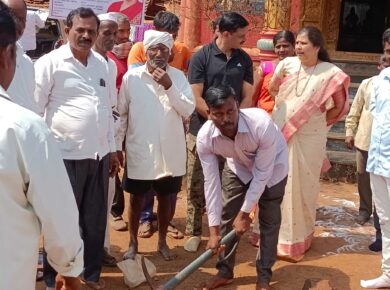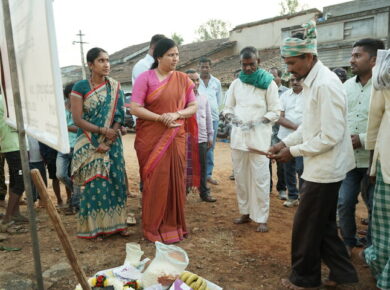The Malvan Controversy: Shivaji Maharaj’s Statue Collapse Sparks Outrage**
On December 4, 2023, a 35-foot statue of Chhatrapati Shivaji Maharaj was inaugurated by Prime Minister Narendra Modi at Rajkot Fort in Malvan, Sindhudurg district. Designed to honor the Maratha king’s maritime legacy, this statue was intended to be a landmark. However, on August 26, 2024, just a few months after its unveiling, the statue collapsed. The incident shocked many, especially considering the modern construction techniques used. The collapse of the statue has sparked protests and widespread criticism, with many questioning the quality of materials and workmanship involved. Ironically, this failure has drawn attention to another monument in Malvan: the Sindhudurg Fort.
**2. Sindhudurg Fort: A Symbol of Maratha Naval Power**
Unlike the ill-fated statue, Sindhudurg Fort, built 357 years ago under the direction of Chhatrapati Shivaji Maharaj, remains an enduring symbol of the Maratha Empire’s naval strength. Constructed between 1664 and 1667, the fort was strategically positioned on an islet in the Arabian Sea to protect against foreign invaders and pirate attacks. It played a crucial role in securing the Maratha kingdom’s maritime borders and asserting dominance over the western coast of India.
Sindhudurg Fort was not merely a military structure but a statement of Shivaji Maharaj’s maritime ambitions. The fort’s location was carefully selected to provide a commanding view of the surrounding seas, making it a key component of the Maratha Navy. Shivaji’s vision for the fort was supported by his trusted officers, including Hiroji Indulkar, who oversaw its construction.
**3. Ancient Engineering Triumphs Over Modern Construction Failures**
While the recent collapse of the Shivaji Maharaj statue has raised questions about contemporary construction practices, the Sindhudurg Fort’s remarkable endurance speaks volumes about ancient engineering techniques. Built using local laterite stones and a special mortar composed of lead and lime, the fort has withstood the ravages of time, monsoons, and even multiple wars.
The fort’s walls, which are 12 feet thick in some places, were designed to absorb and deflect cannon fire. Ingenious construction methods, such as interlocking stonework and concealed escape routes, exemplify the advanced understanding of structural integrity and military strategy of that era. Modern architects and engineers continue to study the techniques used in the fort’s construction, marveling at the meticulous planning and craftsmanship that has allowed Sindhudurg to stand strong for centuries.
**4. The Enduring Legacy of Shivaji Maharaj’s Naval Ambitions**
The Sindhudurg Fort remains a powerful testament to Shivaji Maharaj’s vision of a strong, independent naval force. His foresight in recognizing the importance of maritime strength and coastal defense has left an indelible mark on Indian history. Today, the fort is not only a popular tourist attraction but also a source of inspiration for modern naval strategists and historians.
The contrast between the collapse of the newly constructed statue and the enduring strength of Sindhudurg Fort serves as a poignant reminder of the sophistication and resilience of ancient Indian engineering. As debates continue over the reasons behind the statue’s failure, the Sindhudurg Fort stands as a symbol of enduring strength, defying time and elements—a true marvel of Maratha craftsmanship.
The Modern Versus the Ancient**
The juxtaposition of the collapsed 21st-century statue and the centuries-old Sindhudurg Fort is striking. While the former has become a symbol of controversy, the latter remains a revered icon of engineering brilliance and strategic foresight. This incident has sparked a renewed interest in preserving and studying India’s historical monuments, which continue to inspire and educate future generations about the ingenuity and vision of leaders like Chhatrapati Shivaji Maharaj.










